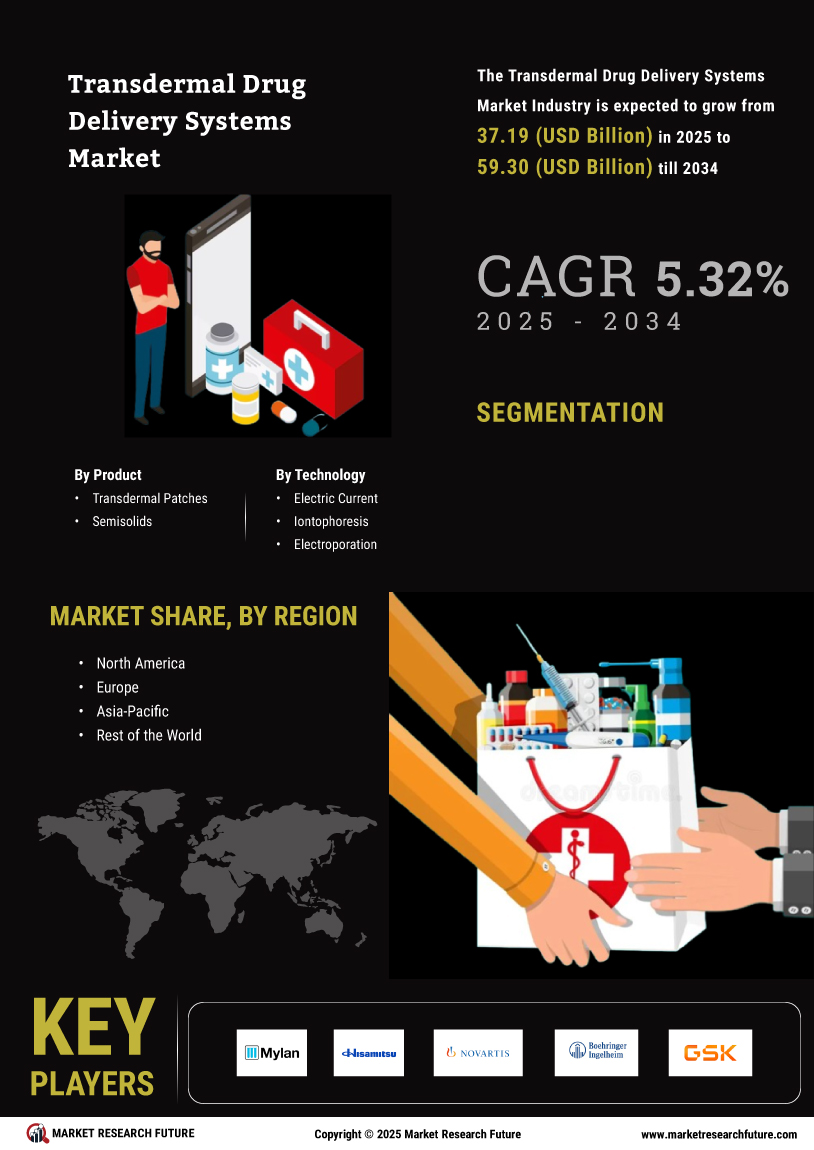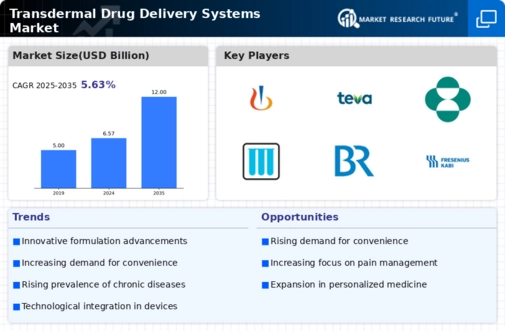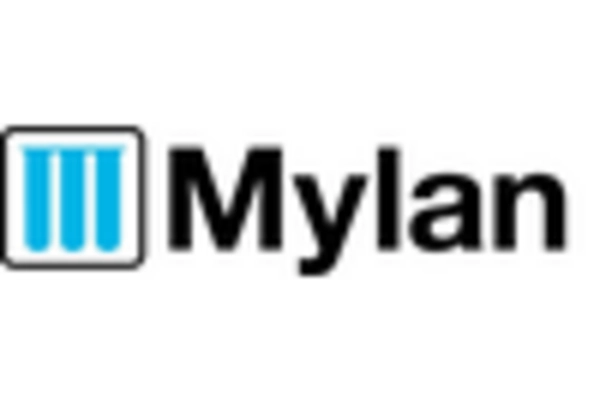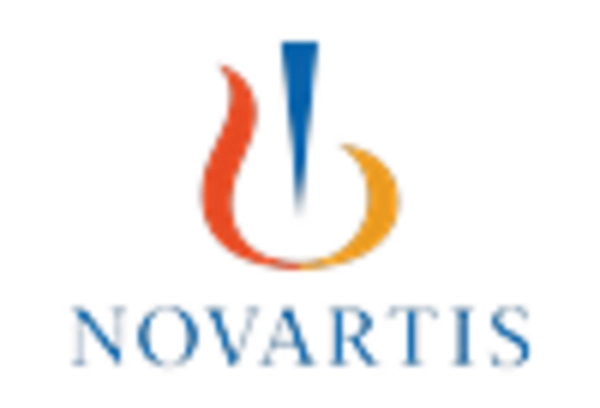Market Growth Projections
The Global Transdermal Drug Delivery Systems Market Industry is poised for substantial growth, with projections indicating a market value of 6.57 USD Billion in 2024 and an anticipated increase to 12 USD Billion by 2035. This growth trajectory suggests a compound annual growth rate of 5.63% from 2025 to 2035, reflecting the increasing adoption of transdermal systems across various therapeutic areas. The market's expansion is driven by factors such as technological advancements, rising chronic disease prevalence, and a growing focus on patient-centric healthcare solutions. These projections highlight the potential for transdermal systems to play a pivotal role in the future of drug delivery.
Growing Focus on Personalized Medicine
The shift towards personalized medicine is reshaping the Global Transdermal Drug Delivery Systems Market Industry. Tailoring treatments to individual patient needs enhances efficacy and minimizes adverse effects. Transdermal systems can be customized to deliver specific dosages based on patient profiles, which aligns with the broader trend of personalized healthcare. This adaptability is likely to drive market growth as healthcare providers increasingly adopt personalized approaches. The integration of transdermal systems into personalized treatment plans may lead to improved patient outcomes, thereby reinforcing their role in modern therapeutic strategies.
Increasing Prevalence of Chronic Diseases
The rising incidence of chronic diseases such as diabetes and hypertension is a key driver for the Global Transdermal Drug Delivery Systems Market Industry. As the global population ages, the demand for effective and convenient treatment options is escalating. Transdermal systems offer a viable solution for managing these conditions, allowing for steady drug release and improved patient adherence. This trend is likely to contribute to a compound annual growth rate of 5.63% from 2025 to 2035. The ability of transdermal systems to provide consistent therapeutic levels makes them an attractive option for chronic disease management, thereby enhancing market potential.
Rising Demand for Non-Invasive Drug Delivery
The Global Transdermal Drug Delivery Systems Market Industry is experiencing a surge in demand for non-invasive drug delivery methods. Patients increasingly prefer transdermal systems due to their ease of use and reduced discomfort compared to traditional injections. This preference is reflected in the projected market value of 6.57 USD Billion in 2024, indicating a robust growth trajectory. The convenience offered by patches and gels allows for better patient compliance, which is crucial in chronic disease management. As healthcare providers seek to enhance patient experiences, the adoption of transdermal systems is likely to expand, further driving market growth.
Technological Advancements in Drug Formulation
Innovations in drug formulation technology are significantly influencing the Global Transdermal Drug Delivery Systems Market Industry. Advances in permeation enhancers and microneedle technologies are enabling more effective delivery of a wider range of therapeutic agents. For instance, the development of dissolving microneedles allows for painless administration of vaccines and biologics, which could broaden the application of transdermal systems. These technological improvements are expected to contribute to the market's growth, with projections indicating a market value of 12 USD Billion by 2035. The continuous evolution of drug delivery technologies suggests a promising future for transdermal systems.
Regulatory Support for Innovative Drug Delivery Solutions
Regulatory bodies are increasingly supporting the development of innovative drug delivery solutions, positively impacting the Global Transdermal Drug Delivery Systems Market Industry. Initiatives aimed at expediting the approval process for novel transdermal products encourage manufacturers to invest in research and development. This regulatory environment fosters innovation and enhances market competitiveness. As a result, the industry is likely to witness a proliferation of new transdermal products, further expanding treatment options for patients. The supportive regulatory landscape is expected to play a crucial role in driving market growth in the coming years.

















Leave a Comment